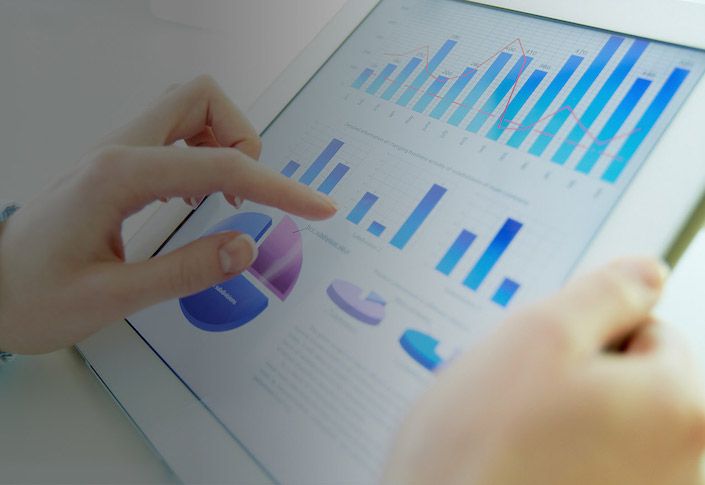Where travel agents earn, learn and save!
News / 2021 Shifts in Travel Behavior
Sojern and PlaceIQ provides an update on where recovery stands today and how traveler behavior has changed

June 24 - In February, Sojern did a look back at 2020 and a look forward at 2021 data, using a combination of Sojern and PlaceIQ data to understand COVID-19 recovery and the bigger picture of the traveler through layering these insights together. Sojern and PlaceIQ joined forces again to provide travel marketers an update on where recovery stands today and how traveler behavior has changed.
Sojern’s real-time search data, which tracks intent and gives insight into the path to purchase, coupled with Place IQ’s location data, reveals the current national and regional travel trends.

Breaking Down Recovery Through Hotel & Flight Bookings
January 6, 2019 – June 12, 2021
Flight booking data shows a steep recovery since the beginning of the year. As most marketers know, the flight vertical had a steeper drop in comparison to hotels, as flights were grounded during some of the pandemic. The flight vertical closed out 2020 about two-thirds down from the average in 2019, whereas the hotel vertical was only down roughly half from the average bookings seen in 2019. The good news is, in June 2021 Sojern sees that both hotel and flight data are 25% down from the “normal” in 2019. In fact, recovery for airlines has been faster than expected, and is resulting in crew shortages and flight cancellations for some airlines.
Recovery Varies By Region Across the Globe
January 5, 2021 – June 12, 2021
For the first time since the pandemic, Sojern data shows great news for flight booking recovery for some regions across the globe, as the Caribbean and US have surpassed 2019 levels (12% and 7%, respectively). In the US, remote states are still the most popular destinations; for example, Alaska, Montana, South Dakota, and Utah. In Latin America (LATAM), while just below 2019 flight bookings, standout destinations for flight booking recovery are Mexico and Costa Rica.
In Europe, Middle East and Africa (EMEA) recovery grew sharply at the end of March/early April as vaccines rolled out and restrictions lifted. However, things may change for the region as the Delta COVID-19 variant spreads in the UK and Portugal, forcing officials to reimplement lockdowns or pause pulling back pandemic mandates. Asia Pacific (APAC) has not seen recovery for flight bookings in 2021 thus far–aside from the Maldives, a tourism hotspot on a remote island. Both APAC and Canada are yet to recover. Canada is still down 70% in 2021 vs. 2019. The US extended restrictions for non-essential travel to Canada until June 21.
A Look at US Domestic Flight Bookings Across Five States
January 6, 2019 – December 28, 2019 & January 3, 2021 – June 12, 2021
Alaska has been a popular destination throughout the pandemic. Travelers are especially drawn to the remote, outdoor options in the state. Domestic flight booking volume surpassed 2019 volume in March and continues to grow. While California and New York are still recovering, California officially reopened on June 15, and restaurants are struggling to find workers to fill their now-open dining rooms. Florida and Hawaii have recovered, surpassing 2019 volume early in the year and they remain relatively stable, following seasonal trends.
Looking at Travel Recovery From PlaceIQ Data
January 2020 – June 2021
First, looking at gas stations (the yellow line at the top), the consistent growth trajectory since April of 2020 represents how much people are moving around. Activity was flat in January and shot up nearly 40% in February. Luxury hotels (the bottom purple line), one of the hardest hit categories, grew the least, likely given their proximity to urban areas which many travelers avoided during the pandemic. However, luxury shows a big upward trend over the last few months with no signs of stopping. In fact, what’s being called the luxury travel boom has officially begun.
Budget hotels saw a major spike, as they are now at 110% of 2019 booking levels. Airport traffic continues to go up and is at about 80% of 2019 traffic. Exciting news, as it is almost entirely carried by leisure travel vs business travel. Sojern will likely see business travel begin to come back as offices reopen in the back half of the year.
How much further did people travel after arrival?

Many travelers are taking domestic flights to major cities, but then driving to rural areas. In the chart above, Sojern sees what happens after they land: travelers are renting cars and continuing on a road trip.
PlaceIQ data showed a 27% increase in distance traveled the same day people landed. As the chart shows, this is even further for places like Portland, Miami, San Diego, and Denver. Even Las Vegas, with the airport close by “the strip”, still saw a 21% increase in travel by car away from the city.
The“New” Normal
Traveler behavior for some may permanently change. What once was comfortable–large crowds, purchasing tickets upon arrival at an attraction vs online ahead of time with timed entry–may not be anymore. PlaceIQ data shows that travelers have not yet returned to “old normal” behaviors. They are still prioritizing staying at home, dining at home, etc.
While some travelers may go back to their old behaviors, many will adopt a hybrid model of travel. They may focus more of their travel on regional drive markets, they may continue to choose remote areas over urban destinations for the foreseeable future. As a travel marketer either preparing for or in the midst of recovery, knowing travelers’ preferences and adjusting your campaign targeting and messaging to match continues to be top priority.
More Travel News:
Delta Flight Museum reopens July 1
New rapid COVID testing options coming to Delta; Purchase and pack for smooth U.S. re-entry
UNWTO organizes the 1st Global Youth Tourism Summit in Italy
SkyTeam celebrates 21 years of dedicated service to its members and their customers











